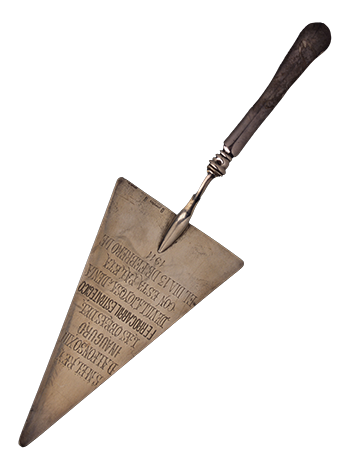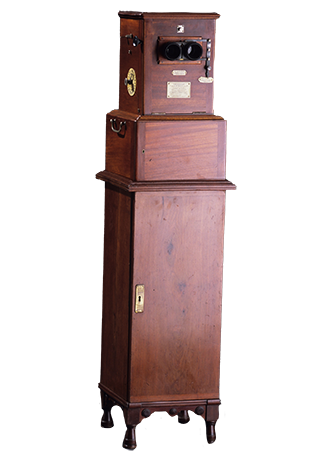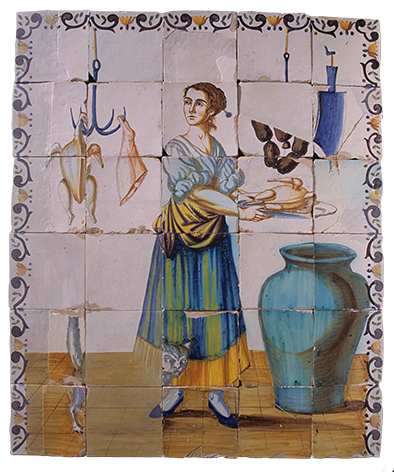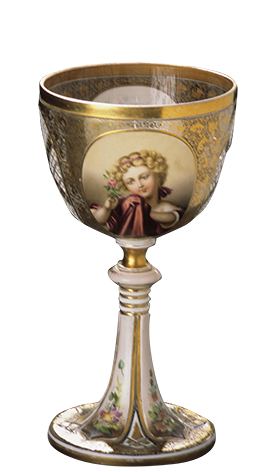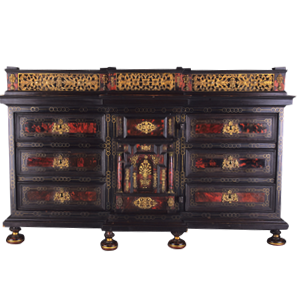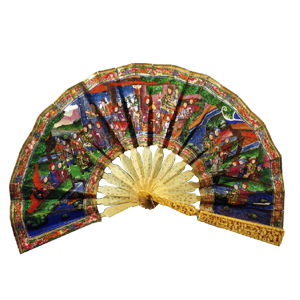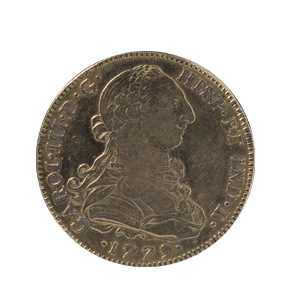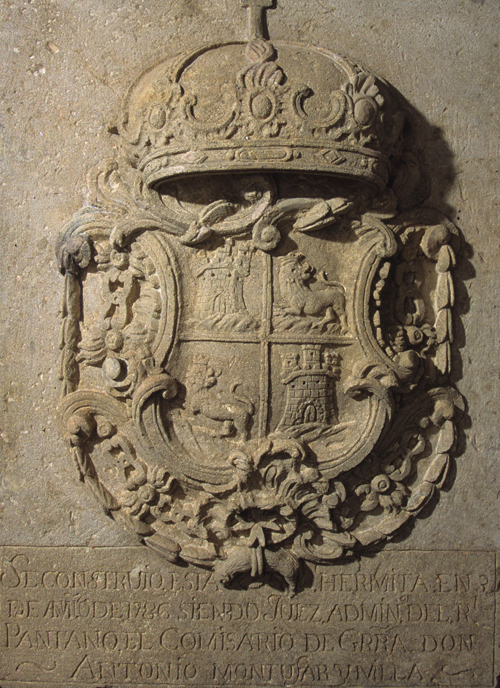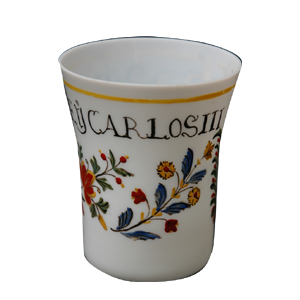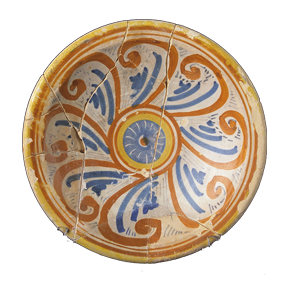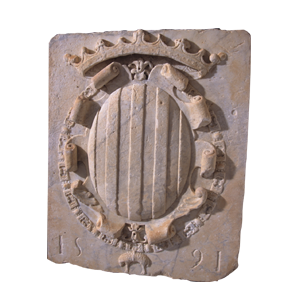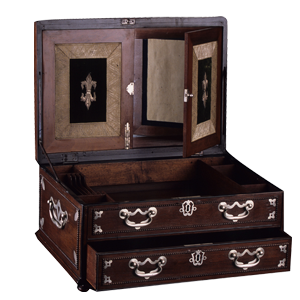
Secreter
Beltrán-Ausó Collection Mahogany wood, ebony and silver h: 36.5 cm; w: 28 cm; h: 52.5 cm 1751
Prismatic box of mahogany wood, made in Havana, Cuba. Top lid with metal hinges and convex profile. Fitted with drawers with doorknocker handles and silver keyholes. Interior drawers and secret compartment in the upper part in mahogany wood. On the reverse of the lid small doors decorated with interior glass. Side handles for carrying. Small ball-finished legs. Consists of a matching table with a secretaire in the same wood, with small ball and socket legs in the Queen Anne style. It has a slight cornice, two drawers and a slightly mixtilinear skirt with a central decoration of scrolls.
It is decorated with silver inlay trimmed with arabesques on the corners of the drawers, the sides and the top of the lid and table. The front of the inner doors is upholstered in velvet embroidered with fleurs-de-lis, the emblem of the House of the Bourbons. The drawers are framed by a cord of stitches in the same wood and decorated with ebony fillets. It has a silver plaque, located on the front of the piece, with a certificate of provenance and authenticity.
This piece is a gift from Ferdinand VII to the Queen's hostess, a member of the Proyé family, on the occasion of their marriage. This piece of furniture is a clear example of the transition in the taste of furniture throughout the 18th century. The use of mahogany, a highly prized material, the most valued being that of Santo Domingo de Cuba, which replaced the traditional walnut furniture. The use of cabriole legs, which increased the slenderness of the tables and eliminated the use of crosspieces and braces. To this we must add the richness in concrete with the use of an unusual metal in furniture such as silver, especially in the handles. The simplicity and sobriety of the lines are reminiscent of 18th century Georgian style furniture.
CS: 11250
Unpublished.
Highlights of the Modern Room
- ................................................. Sánchez de Prado Collection Mahogany wood, glass and metal h: 124.5 cm; w.: 32 cm; d.: 32 cm Early 20th century 32 cm; w: 32 cm Early 20th century
- ................................................. Collection Historical Collection Ceramics Each tile: h: 19.5 cm; w: 19.5 cm; h: 1.8 cm Panel: Height: h: 118.5 cm; w: 87 cm; h: 1.8 cm Late 18th century
- ................................................. Beltrán Ausó Collection Glass h: 27,9 cm; w: 14 cm 19th century
- Beltrán-Ausó Collection Ebony, walnut, applications in lemongrass, pine, bronze and tortoiseshell h: 106.5 cm; w: 66 cm; h: 37 cm Eighteenth century
- ................................................. Beltrán-Ausó Collection Mahogany wood, ebony and silver h: 36.5 cm; w: 28 cm; h: 52.5 cm 1751
- ................................................. El Sotanillo (Alicante) Paper, bone and canvas h: 35 cm; w: 19.5 cm 19th century
- ................................................. Treasure of San Juan de AlicanteOrod: 3'72 cm; p: 27'01 gr; p.c.:12 h.Modern Age.1779
- ................................................. El Sotanillo (Alicante) Stone H: 108 cm; W: 77'7 cm; thickness: 33'5 cm Modern period Year 1786
- ................................................. Beltrán Ausó Collection Glass. Mould blown and worked to the point h: 11cm; w: 9 cm; h: 6.5 cm Real Fábrica de Cristales. 18th century.
- ................................................. El Sotanillo (Alicante) Ceramic h: 17.6 cm, w: 3 cm: 3 cm Montelupo workshop (Italy) Mid-16th century
- ................................................ Casa del Rey, Alicante Marble h: 85 cm; w: 71cm; d: 11 cm Year 1591

